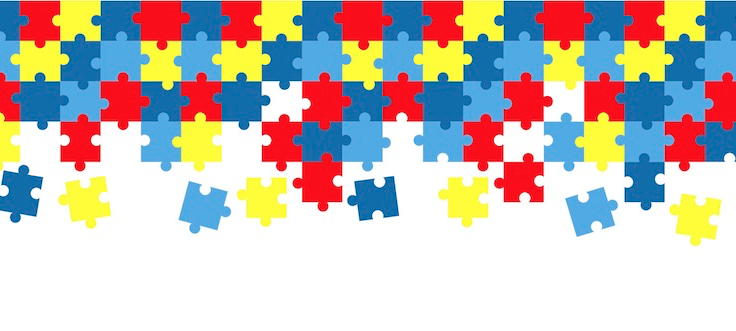April 1, 2021
How to recognize the signs and early intervention
The Centers for Disease Control (CDC) Autism and Developmental Disabilities Monitoring (ADDM) Network began tracking the prevalence of Autism Spectrum Disorder (ASD) in 2000. At that time, they identified ASD occurrence as about 1 in 150 children. In 2016, ADDM’s most recent prevalence survey, that prevalence had skyrocketed to 1 in 54 children. Another alarming CDC statistic is that ASD is four times more prevalent in boys versus girls.
What is ASD?
Autism Spectrum Disorder is a developmental disability that can cause difficulties with speech and language, cognitive, social, and behavior skills. As indicated by the term “spectrum,” these difficulties can present from a mild range of symptoms to more severe.
When you think of these shocking statistics and how common ASD is in the world today, a parent should be very aware of the early warning signs and know what to do if they suspect their child might have ASD.
Learning the Signs and Acting Early is Key
The best way to learn the signs and act early is for parents to developmentally monitor their child. This means being aware of all major developmental milestones, and tracking a child’s progress through them. A great resource to track milestones is on the pathways.org website, which has free resources, games, videos specific to age groups. The CDC also provides useful tools on the cdc.gov website and their free mobile app that can track and monitor milestones.
Your child’s pediatrician is your frontline resource in monitoring your child’s development at scheduled routine well visits. Most pediatricians will also provide a formal developmental screening by checklist at these visits that include motor and communication skills, and sensory and feeding milestones. American Academy of Pediatrics recommends all children be screened for behavior development starting by three months, and that all children be specifically screened for ASD at 18 months and 24 months.
What to do if Milestones are Missed?
If your child is missing a milestone or you have specific concerns, the next step is to schedule a comprehensive developmental evaluation. A child can be tested at 18 months (and sometimes earlier) for ASD, and by age 2, a diagnosis by a trained professional is considered extremely reliable. This type of evaluation further examines a child’s development by observing them and administering formalized tests, and also having the parent complete checklists and questionnaires.
Detailed evaluations can be performed by a variety of professionals, often working as a team, including a developmental pediatrician, pediatric psychologist, neurologist, psychiatrist, speech language pathologist, and occupational therapist. These evaluations can determine if an ASD diagnosis is warranted and provide valuable information regarding treatment and early intervention.
Appointments for these evaluations often take several months to get scheduled, therefore calling to schedule as soon as possible is critical.
Early Signs of ASD are (but not Limited to):
- Poor eye contact
- Limited use of language
- Disinterest in other children or caregiver
- Difficulty handling minor changes in routine
While there is not yet a cure for ASD, research proves that early intervention after early detection can help to improve a child’s development. Learn the signs and act early.
 Kimberly Bradley, MS, LOTR, is a Pediatric Occupational Therapist and owner of Kim4Kids in Metairie.
Kimberly Bradley, MS, LOTR, is a Pediatric Occupational Therapist and owner of Kim4Kids in Metairie.


